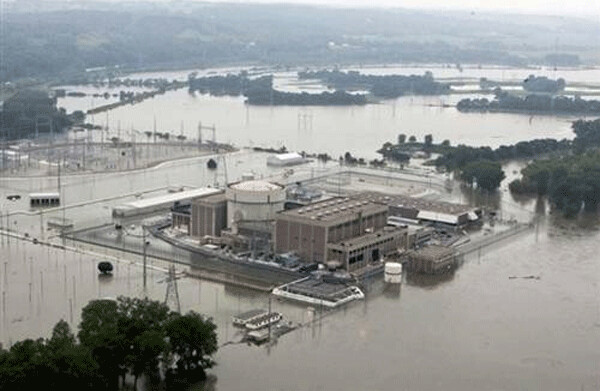News & Articles
Browse all content by date.

With the summer’s record high temp’s all over the world, Andy Rowell asked this pointed question in the Earth Island Journal online: “For the last decade the nuclear industry has been telling us it is the solution to climate change. But if their reactors can’t work in our rapidly warming world, are we just building a whole new generation of expensive white elephants?”
Indeed, Reuters reported Aug. 4 that Electricity de France (EDF) in Paris shut down four nuclear reactors at three sites due to the heat summer wave. EDF, the mostly government-owned utility, ordered the shut downs because the scorching summer heat that slammed Europe drastically raised temperatures in the Rhone and Rhine Rivers. Temperatures reached 98.6°F in the Rhone valley, home to 14 reactors. Highs in Spain and Portugal in early August hovered around 104°F and reached 116.6°F.
The warming of seawater caused by Europe’s heat wave forced Finland’s two Loviisa reactors, about 65 miles outside Helsinki, to reduce power in July, just as it did before, in 2010 and 2011, Reuters reported.
The July 2006 heat wave also forced European reactor operators to reduce or halt production due to dramatic increases in the temperature of river waters. The Guardian reported back then that Spain shut down its reactor on the River Ebro. Reactor operators in Germany also cut output then, and several German and French units were allowed to temporarily violate temperature limits on the hot water the reactors return to rivers.
Nuclear reactors exacerbate global warming
In 2003, temperatures in French rivers reached record highs that also forced the temporary powering down of four reactors. France’s nuclear oversight authority then gave some reactor operators permission to return the river water at temperatures not normally allowed, a move that critics said would endanger fish and add to global warming.
Meanwhile, rising sea levels threaten to shutter one-out-of-four of the world’s 460 power reactors currently built on coastlines. John Vidal reports in the Aug. 21 edition of Hakai magazine that experts have warned that even newly built seawalls may not provide sufficient protection. Vidal interviewed Pete Roche, a former adviser to the UK government and Greenpeace, who pointed out that the seawall at the $25-billion “Hinkley Point C” nuclear station being built in southwest England “does not adequately take into account sea-level rise due to climate change.”
“In fact,” Vidal reports, research by Ensia - a nonprofit environmental magazine published at the University of Minnesota -- suggests that “at least 100 US, European, and Asian nuclear power stations built just a few meters above sea level could be threatened by serious flooding caused by accelerating sea-level rise and more frequent storm surges.”
The two St. Lucie reactors in Florida are among the US coastal nuclear sites considered most vulnerable to storm surges. While no US reactors have been “in imminent danger of a meltdown because of a storm surge,” Vidal notes, there have been many close calls. “Three US reactors were temporarily shut down because of Hurricane Sandy in 2012 and a fourth, Oyster Creek in New Jersey, was put on alert when water levels rose dramatically, according to the US Nuclear Regulatory Commission.”
But the NRC is not concerned about storm surges. In August 2017, as Hurricane Harvey pummeled east Texas, environmental groups called for the immediate shutdown of the two South Texas Project reactors near Bay City. Instead, the twin, 42-year-old behemoths were kept running at full capacity throughout the disaster, the wettest tropical cyclone on record in the United States.
- John LaForge works for Nukewatch, the nuclear watchdog group in Wisconsin, edits its Quarterly newsletter, and with Arianne Peterson co-edited Nuclear Heartland, Revised: A Guide to the 450 Land-Based Missiles of the United
States.
| Tweet |

